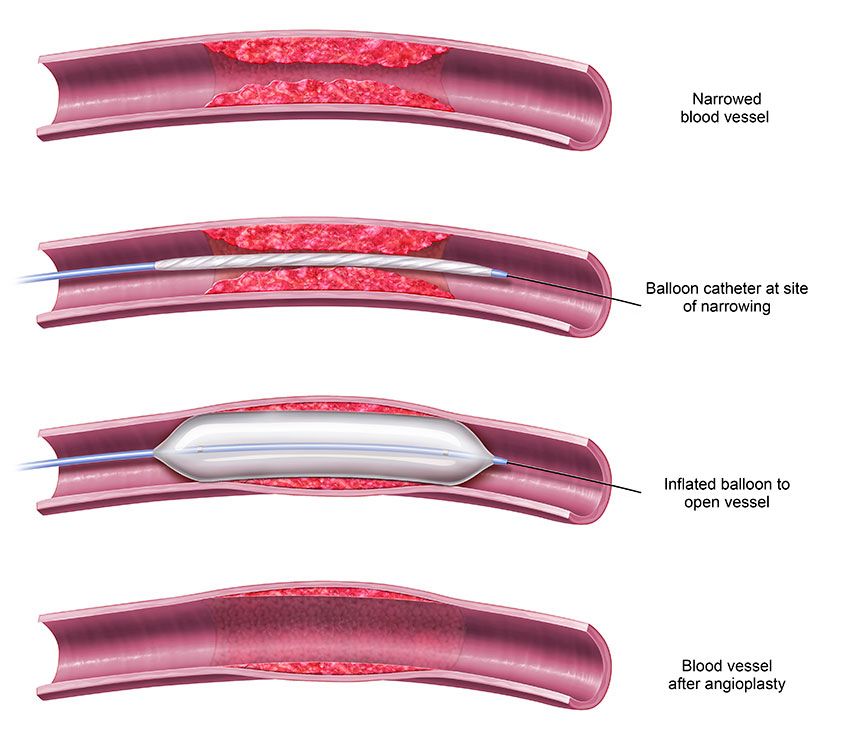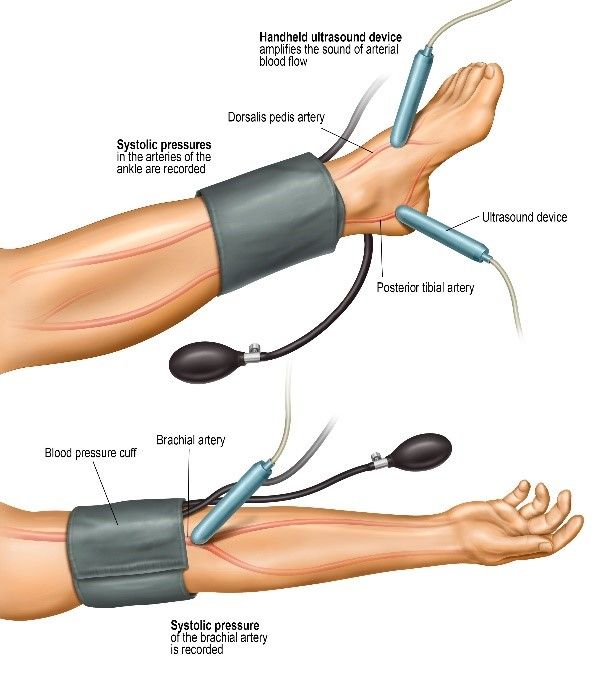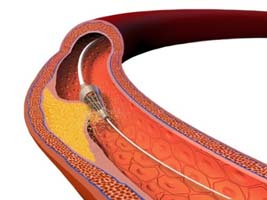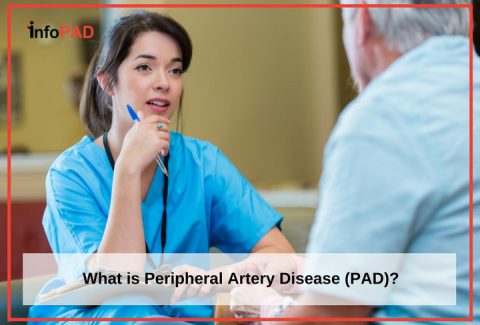
Peripheral artery disease, or PAD, is a circulatory disease in which blocked or hardened arteries reduce blood flow to the extremities, especially the legs and feet. While the disease name can be a mouthful to say, learning the terms your care team will use when talking about testing and treatments can also be a challenge.
Becoming familiar with the medical terms for PAD is worth the effort. It can prepare you to ask informed questions, ultimately allowing you to make better decisions about your health.
Let’s take a look at some of the most common phrases you are likely to hear from your healthcare team when discussing your PAD diagnosis.
12 Common Medical Terms for PAD
Angioplasty – Angioplasty is a minimally invasive procedure used to reopen blocked arteries. During an angioplasty, your doctor will thread a small tube called a catheter through a blood vessel to your blocked artery. Once the blockage has been reached, a small balloon at the tip of the catheter will be inflated to reopen the artery. As the balloon inflates, it flattens the blockage against the wall of your artery, stretching it open. This results in increased blood flow. i 
Ankle Brachial Index – Also called an ABI, an Ankle Brachial Index is a test that measures the blood pressure in your ankle and arm while you are resting. The blood pressure readings are usually then repeated after you have walked on a treadmill for five minutes. The ABI can help determine the severity of your PAD.
Arteriogram – Let’s break this one down. ‘Arterio’ refers to your arteries, and ‘gram’ means drawing in Latin. Through the use of x-rays and a contrast agent (sometimes called contrast dye), an arteriogram essentially takes a picture of the inside of your arteries so your doctor can see if and where they are blocked.

Atherectomy – This minimally invasive procedure is another alternative to surgery and removes plaque from your arteries. During the atherectomy procedure, a thin wire is threaded through a catheter that has already been placed into your blocked artery. One of several devices will be used to either grind, shave or vaporize the plaque blocking the blood flow.
Atherosclerosis – Atherosclerosis is another term for hardening of the arteries. Atherosclerosis is a serious medical condition in which plaque – cholesterol, fats, and other substances – builds up in and on the walls of your arteries. ii
Claudication Pain Scale – The claudication pain scale is often used by researchers in clinical trials with people who have peripheral artery disease. The scale measures the degree of pain patients feel when walking. Pain is measured on a scale of 1 to 5 as follows:
1 = no pain
2 = onset of pain
3 = mild pain
4 = moderate pain
5 = severe pain iii
Critical Limb Ischemia – Critical limb ischemia (CLI) is an advanced stage of PAD. It is defined as the presence of leg pain while at rest, ulcers, and gangrene. CLI identifies patients at high-risk for major amputation. iv
Intermittent Claudication – Intermittent claudication is the result of poor blood circulation in the arteries of your leg(s) caused by a buildup of plaque. The symptoms of intermittent claudication are pain, cramping or fatigue in buttocks and legs, particularly your calf muscle, which occurs while walking and lessens or disappears when stopping to rest. Intermittent claudication is both a common and early symptom of PAD. If not treated, intermittent claudication often gets worse over time. ii
Pulse Volume Recording – Pulse volume recording (PVR), is a test that measures the circulation – or volume of blood flow through your arteries – in your legs or arms. During this test, cuffs similar to those used during a regular blood pressure reading are inflated twice to measure blood pressure and blood volume in an affected artery.
Stenting – Stenting may be performed during an angioplasty procedure when it is determined that opening the blockage with a balloon alone will not be sufficient to maintain blood flow through your affected artery. During a stenting procedure, a small mesh tube, called a stent, will be inserted through a catheter that has already been threaded into the affected artery until the blockage is reached. The stent is left in place to help prop open your artery. i
Thrombolytic Therapy – This therapy can be used if a blood clot is blocking blood flow through an artery to your legs or arms. During thrombolytic therapy, your doctor will inject a clot-dissolving drug, also known as a clot-buster, into your artery to break up the clot and restore normal blood flow. i
Ultrasound – An ultrasound is another test that can determine if one or more of your arteries are blocked. Using sound waves, the test measures the flow of blood through your veins and arteries in your arms and legs.
A PAD diagnosis can be a scary thing at first. But knowing the common medical terms for PAD and procedures associated with the disease can give you some peace of mind. By understanding what your healthcare team is talking about, you can begin to feel confident in with the course of treatment you and your doctors decide on.
Sources:
i Mayo Clinic. (2017). Retrieved from: http://www.mayoclinic.org/diseases-conditions/peripheral-artery-disease/diagnosis-treatment/treatment/txc-20167509
ii American Heart Association (2017). http://www.heart.org/HEARTORG/Conditions/Cholesterol/WhyCholesterolMatters/Atherosclerosis_UCM_305564_Article.jsp#.WOuUjSMrIcZ
iii Vasulardisease.org (2017) PAD Training Exercise Toolkit: A guide for Healthcare Professionals. Retrieved from: http://vasculardisease.org/files/pad-exercise-training-toolkit.pdf
iv Journal of the American Heart Association (2016). Critical Limb Ischemia: Current Trends and Future Directions. Retrieved from https://doi.org/10.1161/JAHA.115.002938


